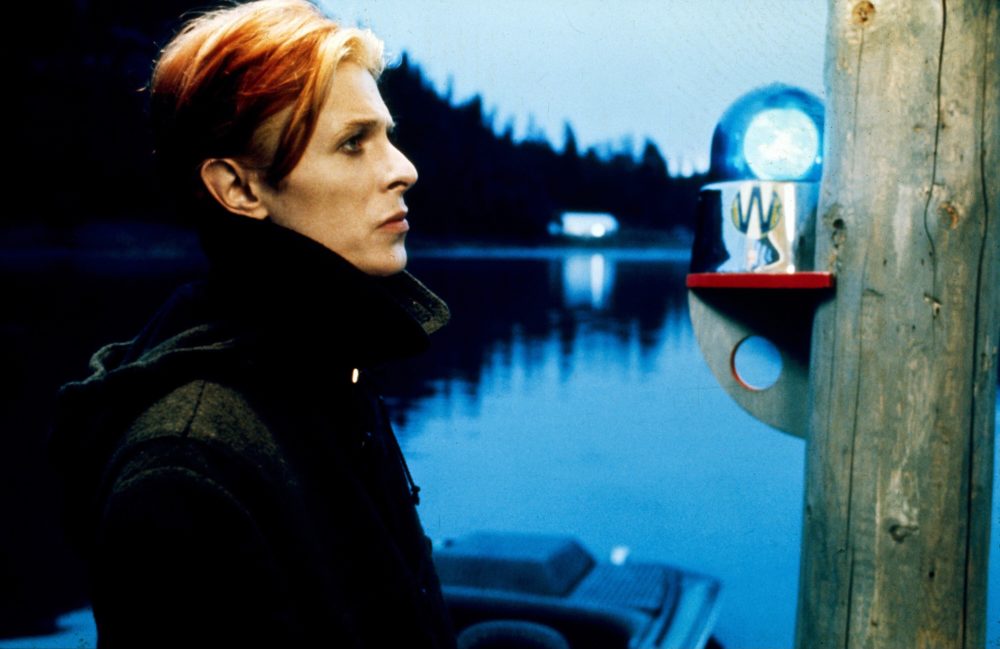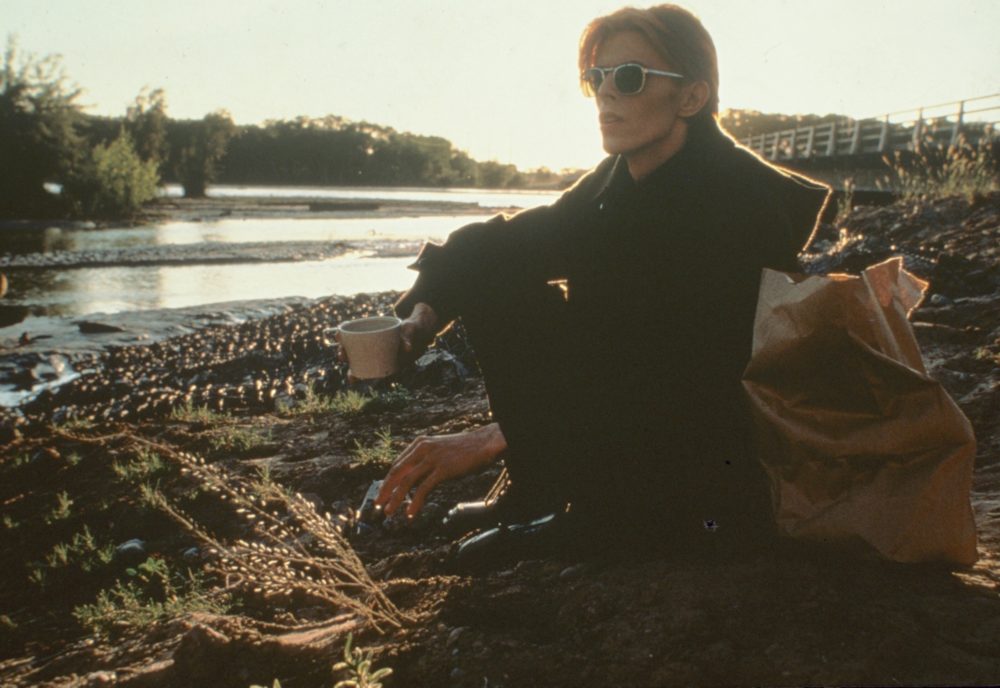Advertisement
Review
Why David Bowie Might Have Been One Of Our Best Character Actors If Not For That Pesky Day Job

Watching Nicolas Roeg’s “The Man Who Fell to Earth” feels like reading a book in which every third or fourth page has been torn out. Doubling down on the trippy ellipses the director had utilized to such devastating effect in his previous films “Performance” and “Don’t Look Now,” this cryptic adaptation of Walter Tevis’ straightforward science fiction novel was a notorious source of bafflement to American audiences upon its 1976 release. And with good reason: The movie had been shorn of some 30 minutes or so by its U.S. distributor, which given Roeg’s tricky structure was akin to removing a quarter of the clues from an already nigh-impossible mystery. (This butchered American edit played often on pay cable in the 1980s, and I recall staring at it in rapt confusion like a dog watching television.)
A digital restoration of Roeg’s original 139-minute cut screens this Thursday night as part of the Coolidge Corner Theatre’s Cinema Jukebox series, complete with a pre-show performance from students of the Brookline Music School paying tribute to the film’s star, David Bowie. Seen in its complete form the movie remains daunting but not impenetrable – albeit far more interested in conjuring moods of mystery and melancholy than explicating a prosaic plot. Above all, it is the ineffable, broken sadness of the haunted alien at its center that registers most powerfully, which is probably why over the years “The Man Who Fell to Earth” has been enshrined as Bowie’s signature big-screen role.

The rock star formerly known as Ziggy Stardust plays Thomas Jerome Newton, a brilliant scientist from a desert planet who has come here seeking a way to save his dying world. It’s an incredibly canny bit of casting, shrewdly making use of Bowie’s androgynous otherness and obvious intellect — not to mention the pale skin and scarily emaciated frame from his infamous “cocaine and milk” phase. Newton patents extraterrestrial technology to become a Gatsby-esque billionaire, secretly working with a disgraced college professor (the dear, departed Rip Torn) on a plan to rescue his planet while growing increasingly distracted by dalliances with a blowsy hotel chambermaid (Candy Clark) who introduces him to the earthly wonders of sex, television and gin.
Time passes quickly and without warning in “The Man Who Fell to Earth.” Roeg and screenwriter Paul Mayersberg elide entire years sometimes during a single scene, with the supporting cast drifting into (not always convincing) old age makeup within the space of an edit. The movie is almost entirely unconcerned with telling you exactly what’s happening, especially when Newton’s rescue mission is sabotaged and the alien incarcerated by a nefarious executive (Bernie Casey) from a rival corporation that might be a front for the government, but does it even matter?
No, not really. Despite the sci-fi trappings, this is a movie more concerned with alienation than aliens — the sad story of a beautiful, otherworldly creature who becomes quite depressingly worldly indeed. Newton’s noble ambitions are slowly sapped away in a drunken stupor, as he lounges around watching 12 televisions at a time, occasionally working up an urge for some unpleasant sex with the wife. Tevis claimed in interviews that he wrote the novel, in part, as a way of confronting his own alcoholism, and it’s worth pondering how late in the film, when Newton finally pulls it together to break out of his prison, he discovers there wasn’t even a lock on the door.
Roeg’s prismatic cutting style — in which roving zooms are abruptly interrupted with discontinuous insert shorts — may wear a great big date stamp reading “1970s,” but he was also really onto something with regard to the persistence of memory. Much of “The Man Who Fell to Earth” unfurls in fleeting glimpses and overlapping sound bites, with Roeg shooting sex scenes (and boy howdy, did this director love his sex scenes) in explicit, impressionistic flashes the way one recalls an erotic encounter after the fact. You don’t watch the movie so much as it imprints itself upon you.
It’s often been said that were it not for his day job David Bowie would be remembered as one of film’s most fascinating character actors. He was exceptionally savvy at using his ethereal presence to play small parts as larger-than-life figures who existed off to the side of a movie’s main storyline. His Andy Warhol in “Basquiat” and Nikola Tesla in “The Prestige” seemed to be dropping by for a quick visit from far more interesting films of their own, but my all-time favorite is his put-upon Pontius Pilate in Martin Scorsese’s “The Last Temptation of Christ,” who has so many better things he’d rather be doing that day than dealing with another one of these wannabe prophets.

Bowie’s performance in “The Man Who Fell to Earth” is more instinctual, less studied yet no less affecting. But the real heartbreaker for me here is Candy Clark as the desperately lonely, dim-bulb New Mexico maid who inadvertently becomes an agent of his undoing. I had a crazy childhood crush on Clark’s platinum-wigged fast girl who “loved the feel of tuck-and-roll upholstery” in “American Graffiti,” and her Mary-Lou in “The Man Who Fell to Earth” seems very much the same spirit, though several more miles down a bad road.
It’s an old joke that whenever a critic describes an actress’ performance as “fearless” that means she takes her clothes off in the movie. And yes, “The Man Who Fell to Earth” contains what by contemporary standards is a startling amount of nudity. (It was the ‘70s. Even Rip Torn goes full frontal.) But it’s difficult to think of another word that better describes Clark’s deeply felt performance as a sweet, none-too-bright woman who doesn’t understand the mess she’s mixed up in but just achingly, agonizingly doesn’t want to be alone. She’s unafraid to be selfish, ugly, needy and unmistakably human.
The moment that gets to me most occurs during one of the movie’s many endings — it does go on a bit — decades after the action when Clark’s character has shacked up with Torn’s avuncular Iscariot, two elderly boozebags drinking away their evenings, trying not to talk about the extraordinary friend they both betrayed. It’s Christmas Eve and she gazes wistfully out the window, up to the stars, finally letting us feel the weight and regret of all that has occurred. Time gets away from us.
“The Man Who Fell to Earth” screens at the Coolidge Corner Theatre on Thursday, July 18.
